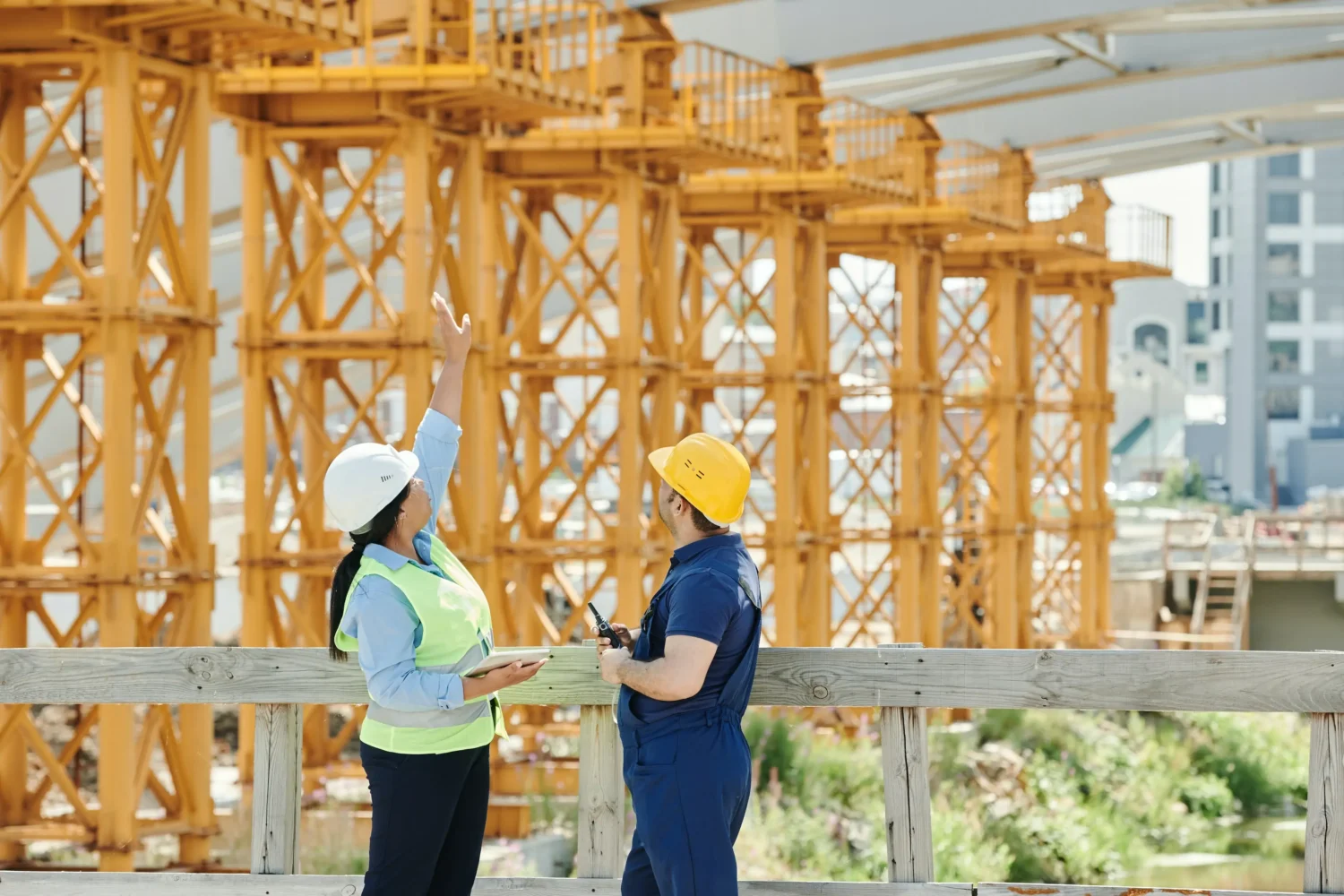
Domestic Reverse Charge Explained
1 Mar 2021Another challenge faced by many is the newly introduced domestic reverse charge. As of 1st March 2021, the UK Government has introduced a significant change to the way the construction industry collects VAT.
So, what exactly is the domestic reverse charge, and how does it work?
What is the domestic reverse charge?
Under the traditional VAT model, a VAT-registered UK business adds the UK rate of VAT to their taxable sales for the customer to pay as part of their invoice. The business then pays that collected VAT amount to HM Revenue and Customs (HMRC) as part of their annual VAT return.
With the new VAT domestic reverse charge, instead of collecting VAT from the customer on behalf of the HMRC and passing it on to them, the customer is required to pay it directly to HMRC themselves. As per the normal rules, they can still recover this VAT payment as input tax.
Who does the domestic reverse charge apply to?
HMRC’s domestic reverse charge applies to specified standard and reduced-rate VAT services for VAT-registered individuals and businesses that operate via the CIS in the UK.
If you are part of the CIS, whether you are a subcontractor employed by a contractor or a contractor who employs subcontractors, the domestic reverse charge applies to you.
In what instances does the domestic reverse charge not apply?
The reverse charge does not apply to:
-
Individuals and businesses who are not VAT-registered
-
Any work conducted outside of the UK
-
Zero-rated supplies
-
Intermediary supplies (VAT-registered businesses that are directly linked to the end-user, such as a landlord purchasing on behalf of a tenant)
-
End-users (individuals or businesses who receive construction services as an end-point and do not sell the service as part of their own business offerings. Examples include domestic consumers and developers)
-
Any temporary workers or employees that the business is responsible for paying
What services must apply the domestic reverse charge rule?
According to the HMRC, the domestic reverse charge applies to the following services:
-
constructing, repairing, altering, extending, dismantling, or demolishing:
-
permanent or temporary structures (includes offshore installation services)
-
any works that form (or plan to form) part of the land, such as walls, roadworks, pipelines, power lines, railways, aircraft runways, electronic communications equipment, reservoirs, wells, sewers, water mains, inland waterways, docks and harbours, and any industrial plant and/or installations for land drainage, coast protection or defence
-
installation (to any building or structure) of power supply, air-conditioning, heating, lighting, ventilation, water supply, drainage, sanitation, or fire protection systems
-
any internal cleaning of structures and buildings during the course of their construction, repair, restoration, alteration, or extension
-
the painting or decorating of any building or structure's internal or external surfaces
-
any services that form an integral part (or a part of the preparation or completion) of those outlined above - examples include earth-moving, site clearance, excavation, boring and tunnelling, foundation laying, scaffold erection, landscaping, site restoration, and the provision of access works and roadways
It's important to note that any materials supplied and directly used as a part of the above services will also be subject to the reverse charge rule.
What services does the reverse charge not apply to?
When supplied on their own, the following services should not use the reverse charge rule:
-
the drilling for, or extracting of, natural gas or oil
-
the extraction of minerals - boring, tunnelling, surface working, or underground works construction
-
the manufacture (and/or delivery to site) of building or engineering equipment or components, plant or machinery, or materials
-
the manufacture (and/or delivery to site) of components for air-conditioning, lighting, heating, power supply, ventilation, water supply, drainage, sanitation, or fire protection systems
-
the professional work of building, engineering, landscape, and interior/exterior decoration consultants, surveyors, and architects
-
the manufacturing, installation, and repair of artworks such as murals, sculptures, and any other works that are purely artistic, signwriting, and the erection, installation, and repair of any advertisements or signboards
-
the installation of blinds, shutters, and seating
-
the installation of security systems, closed-circuit television, burglar alarms, and public address systems
How to invoice for domestic reverse charge-applicable services
When supplying a service that the reverse charge applies to, it's essential to edit your invoice to incorporate this change.
Your invoice should state clearly that it does not incorporate any charge for VAT, and that the recipient must account for the VAT on their own VAT return. In addition, to be legally compliant, your invoice must make mention of the term 'reverse charge.' You can do this by stating:
-
Reverse charge applies: Customer to pay VAT directly to HMRC
-
Reverse charge: VAT Act 1994 S.55A applies
The former example is a clearer way to alert customers unfamiliar with the charge that they are responsible for paying it directly to HMRC. You must also detail how much VAT is due under the reverse charge.
The impact on construction businesses
Careful planning and management are required to minimise the impact of the reverse charge on the financial and administrative aspects of construction firms.
From an administrative perspective, construction businesses and subcontractors should ensure that their accounting systems have the capacity to process reverse charge transactions without error. Given that the VAT amount must still feature on all invoices regardless of whether the reverse charge applies, there is the risk that suppliers will incorrectly account for it with HMRC, and that customers will incorrectly recover it come tax time.
Subcontractors who have previously relied on VAT collections to inject extra working capital into their business through the year must carefully revise how they will manage their cash flow. For some, it may be necessary to negotiate revised payment terms with suppliers and customers to avoid issues in the supply chain due to limited cash flow funds.
More on 'end-users'
An 'end-user' is a customer who receives a specified service for any purpose other than actioning (and profiting from) the onward supply of that service.
In order to invoice a customer as an end-user and revert to standard VAT collection rules, the customer must provide confirmation that they are an end-user (this can be provided in writing or as part of a contract). HMRC has indicated that it is a customer's prerogative to essentially 'opt out' of being considered an end-user, which could significantly improve their cash flow.
That said, the legislation on this is unclear, and anyone considering this should proceed cautiously and ideally acquire an exemption ruling directly from MNRC before enacting this position.
Either way, suppliers of reverse-charge applicable services must confirm whether a customer is an end-user, and obtain confirmation of their VAT and CIS status before invoicing them (preferably, these details will be confirmed within the contract).
It is also important to note that any construction service recipients not currently deemed a contractor in the eyes of CIS should stay informed of any CIS rule changes that may impact their position. For more information, you can contact the CIS Helpline on 0300 200 3210
Why was the reverse charge introduced?
According to HMRC, the domestic VAT reverse charge is in place to tackle fraud. The construction industry is commonly targeted in this way, with some businesses charging VAT for their services and then disappearing before paying their VAT bill. By moving the VAT charge further down the supply chain, HMRC makes this act of tax fraud virtually impossible.
How to verify the VAT and CIS registration of a business
HMRC states that companies are not required to verify the CIS status of an existing customer for the purpose of determining the applicability of the reverse charge.
For sub-contractors, verification of a contractor's CIS registration can be achieved by asking them directly for the details. They should then retain a copy of the documentation received.
HMRC instructs that contractors use the CIS verification system (or CIS software) whenever taking on a new sub-contractor.
Related: What is a CIS monthly return?
Related: Construction Industry Scheme (CIS): How to verify a subcontractor
Is applying the reverse charge optional or mandatory?
The VAT domestic reverse charge is mandatory in all applicable situations.
While HMRC indicated that they would make some allowances for incorrect applications of the charge within the first six months of its inception in March 2021, this period has long since passed.
Final thoughts
The domestic reverse charge is a significant change to long-held tax accounting practices, and some construction industry professionals may be struggling to adjust.
If you're unsure about any aspect of the reverse charge guidelines or need help planning your business cash flow and finances to account for the change, consult with our friendly accountants at info@accountsandlegal.co.uk.
Find out about our full range of tax services and how we can help your business today.





















